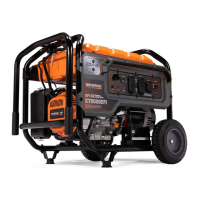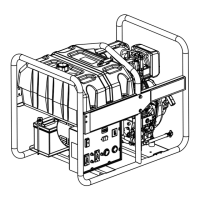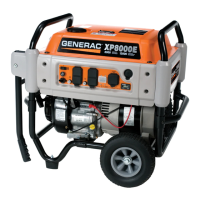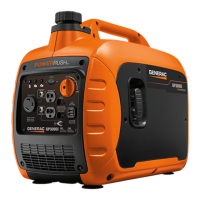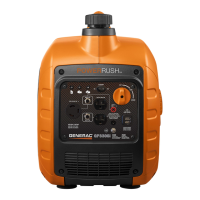Section 1 EFI Engine Control Diagnostic Tests
18 Diagnostic Repair Manual
Air Metering and Measurement
The amount of air entering the engine is controlled by a
conventional butterfly valve located in a throttle body
assembly.
Airflow measurement is by Speed Density. The speed
density system uses a solid-state pressure transducer to
measure the pressure in the intake, combined with rpm
and air temperature to indirectly determine airflow. A
certain pressure relates to a certain voltage which is
relayed to the ECU (Engine Control Unit).
Sensor Inputs
As with most EFI systems, there are 6 basic inputs that
are measured by the ECU;
RPM
Most systems measure rpm using the ignition coil pulse or
crank triggered magnetic/hall effect sensors. Rpm is
considered a primary input signal on all EFI systems. Many
systems generate an injection pulse for every tachometer
pulse, so as rpm is increased, the frequency of injection
pulses increases. However, since generator rpm is
constant, this input is primarily for governing engine speed.
Airflow
On many systems, this input is also considered a primary
input signal. However, in portable generator applications,
airflow is predetermined and calculated by algorithms in
the ECU.
Manifold Pressure
On speed density type systems, this input is essential
when combined with the rpm signal to calculate airflow.
As the throttle is opened, the manifold pressure
increases which will require more fuel.
Throttle Position
This input is a secondary input on most systems. It is
required mainly for load enrichment when the throttle is
rapidly opened. However, a Throttle Position Sensor
(TPS) is not utilized on this portable generator
application.
Engine Temperature
Engine temperature is a secondary input required mainly
to ensure proper starting and warm-up of the engine.
When the engine is cold, the air to fuel ratio must be very
rich to enable enough fuel to vaporize for proper starting.
The computer increases the injector pulse width to
supply extra fuel when cold and tapers this fuel off as the
cylinder head temperature increases. Once the engine
warms past 120 degrees or so, the computer does not
need to add any extra fuel.
Where a carburetor chokes off air to enrich the mixture
when cold, EFI injects extra fuel to achieve the same effect.
Air Temperature
This is a secondary input required especially on speed
density systems. The sensor is usually mounted in the
intake manifold or air filter area. As the air temperature
drops, its density increases. Denser air requires more
fuel. As the temperature of the inducted air increases, the
computer reduces the pulse width to compensate for
lower density.
Basic Operation
As explained in Basic Open-Loop Theory, the computer
processes all of the voltage signals from the various
sensors to determine the engine operating conditions at
the moment and delivers the appropriate pulse width to
the injector. If engine airflow increases by 10%, the pulse
width is also increased by about 10% to keep the air/fuel
ratio constant. For example, if the load is doubled from
2000 Watts to 4000 Watts, the number of injections are
also doubled to double the fuel flow.
The computer looks at the changes in sensor inputs
every few milliseconds in order to be ready to modify the
pulse width if any of the parameters change.
Figure 4-2. ECU/Carburetor Connector
Table 1-1. ECU/Carburetor Connector
Pin Wire Color Function
1N/A N/A
2N/A N/A
3 Black Oil Pressure
4 Brown Temperature
5 Green/White CT (Current Txfmr)
6 Grey Idle Switch
7 Red Battery + (POS)
8 Green/White CT (Current Txfmr)
9 Yellow/Green Battery – (GND)
10 Red/White Key Switch
11 Blue/White Crankshaft Sensor
12 Yellow Warning Lamp
13 White Injector
14 Green Communication
15 Orange Fuel Pump
16 Red/Black Ignition
16 8
71
4
5
6
3
12
15
14
13 911
10 2
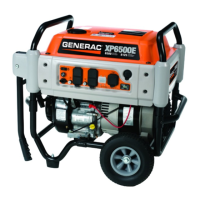
